Tuning a banjo is a vital skill for every banjo player, beginner or seasoned. Proper tuning ensures your instrument produces the right sound and harmonizes with other instruments during a performance. This process may feel overwhelming at first, but with patience and practice, it will become an intuitive part of your musical journey. This guide will walk you through the fundamental steps of tuning a banjo, helping you strike the perfect chord every time.
Why do I need to tune my banjo?
Tuning your banjo is not only essential but also a crucial step in achieving the correct musical notes and desired sound when playing. It is like the foundation upon which the entire musical experience is built. Imagine strumming your banjo and hearing discordant chords, each note clashing with the other, throwing the melody off-key. It’s not a pleasant sound, is it? By regularly tuning your banjo, you ensure that each string is in perfect harmony, creating a beautiful and melodious sound that resonates with the audience.
Whether you are practicing alone, jamming with friends, or playing in a band, staying in tune is of utmost importance. It ensures that every strum, pluck, and chord is delivered with precision and clarity, allowing you to showcase the full potential of your banjo. So, take the time to tune your banjo before every session, and you’ll be amazed at how it elevates your musical experience to new heights.[1]
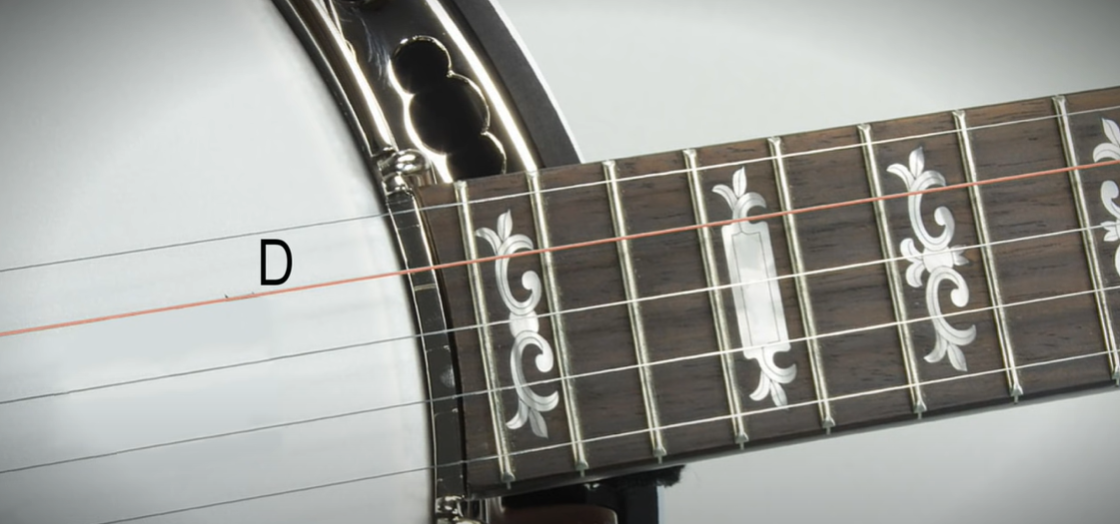
Learning to Tune a Banjo
Mastering the art of banjo tuning involves understanding the banjo’s anatomy and developing a keen ear for pitch. Your banjo typically has four or five strings, each of which corresponds to a specific note when played open: from the top string downward, these notes are D, B, G, D, and G for a 5-string banjo.
To begin the tuning process, start by loosening each string to relieve tension. This step helps ensure a smooth and accurate tuning experience. Once you’ve loosened the strings, you can proceed to tune one string at a time.
If you’re a beginner or want precise accuracy, using a digital tuner can be helpful. Simply pluck the string and turn the tuning peg slowly until your tuner indicates you’ve hit the correct note. This method eliminates any guesswork and guarantees accurate tuning.
However, as you practice and gain experience, try to familiarize yourself with the sound of each note. Over time, you should be able to tune your banjo by ear, refining your musical skills and enhancing your understanding of your instrument. This ear-training not only improves your ability to tune but also deepens your connection to the music you create.
Remember, the process of banjo tuning may seem intricate at first, but with persistence and dedication, tuning your banjo will become second nature. Embrace the journey and enjoy the harmonious rewards that come with a perfectly tuned banjo.[1]
What does ‘Sharp’ and ‘Flat’ mean?
In musical terms, ‘sharp’ and ‘flat’ refer to slight alterations in pitch. When a note is denoted as ‘sharp’ (signified by the symbol ‘#’), it means the pitch is slightly higher than the natural note. Conversely, when a note is labeled as ‘flat’ (designated by the symbol ‘b’), it means the pitch is slightly lower than the natural note. These alterations in pitch provide musicians with the ability to create nuanced melodies and harmonies.
When tuning your banjo, it is important to understand how to recognize sharp and flat notes. If a string is playing a sharp note, this indicates that the pitch is higher than it should be. In this case, you will need to loosen the corresponding tuning peg to lower the pitch and bring it back into alignment with the desired note. On the other hand, if a string is playing a flat note, it means that the pitch is lower than intended. To correct this, you will need to tighten the peg to raise the pitch and achieve the desired note.
Developing the ability to recognize sharp and flat notes is crucial for accurate tuning and producing harmonious music. It allows musicians to ensure that their instruments are in tune with each other and creates a foundation for beautiful melodies and chords to be played. So, the next time you tune your banjo, remember to pay attention to sharp and flat notes and make the necessary adjustments to achieve the perfect pitch.[1]
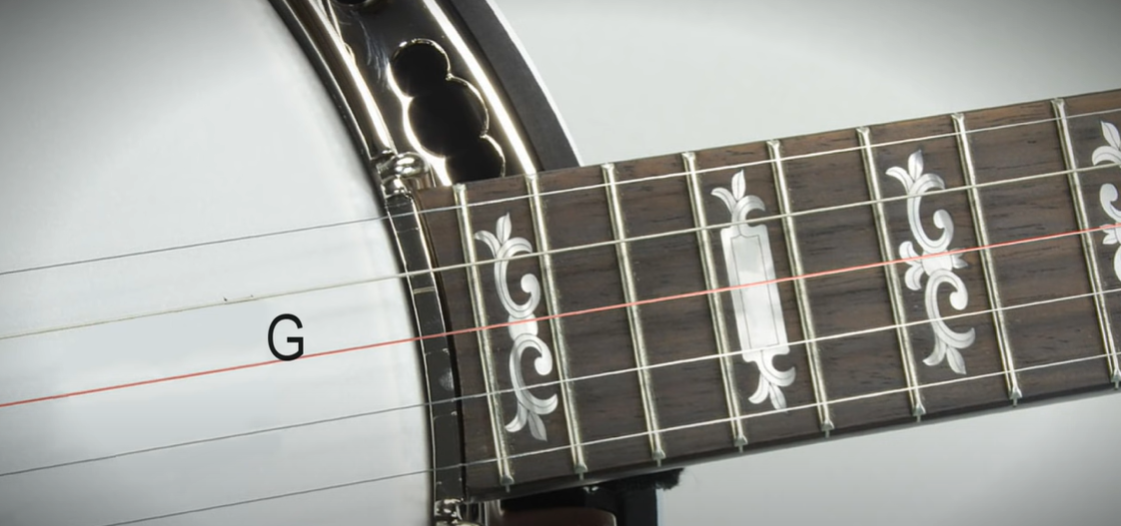
Matching pairs of notes
Matching pairs of notes is an advanced skill for tuning a banjo, especially for those who are tuning by ear. This method involves tuning one string to the correct pitch and then using that as a reference to tune the remaining strings. For a 5-string banjo, the first and fourth strings are both tuned to D, while the second and third strings are tuned to B and G respectively. This creates pairs of matching notes (D-D and B-G) between the strings. To achieve this, play the two strings you want to match together. If they produce a smooth, harmonious sound, they’re in tune. If not, you’ll hear a dissonant or “beating” sound, indicating one of the strings needs adjustment. Gradually adjust the tuning peg of the second string while continuously playing the strings together until they resonate in harmony. This technique requires a keen ear and some practice, but it will greatly improve your ability to tune your banjo accurately.[2]
Tuning to the wrong note
Even experienced musicians, who have spent countless hours honing their skills, may occasionally find themselves tuning their instrument to the wrong note. This can happen for various reasons such as distractions, a momentary lapse in memory regarding the correct notes, or even a malfunctioning tuner.
For instance, let’s consider a 5-string banjo. If you mistakenly tune the strings to E, C, A, E, and A, instead of the correct notes D, B, G, D, and G, your banjo will be out of tune, resulting in discordant and unpleasant music. To avoid this, it is vital to ensure that you are aiming for the correct notes when tuning your instrument.
Remember, practice makes perfect, and with consistent effort, tuning your banjo to the correct notes will eventually become an effortless and seamless part of your routine. So keep at it, and soon enough, you’ll be producing beautiful melodies with a perfectly tuned banjo.[2]
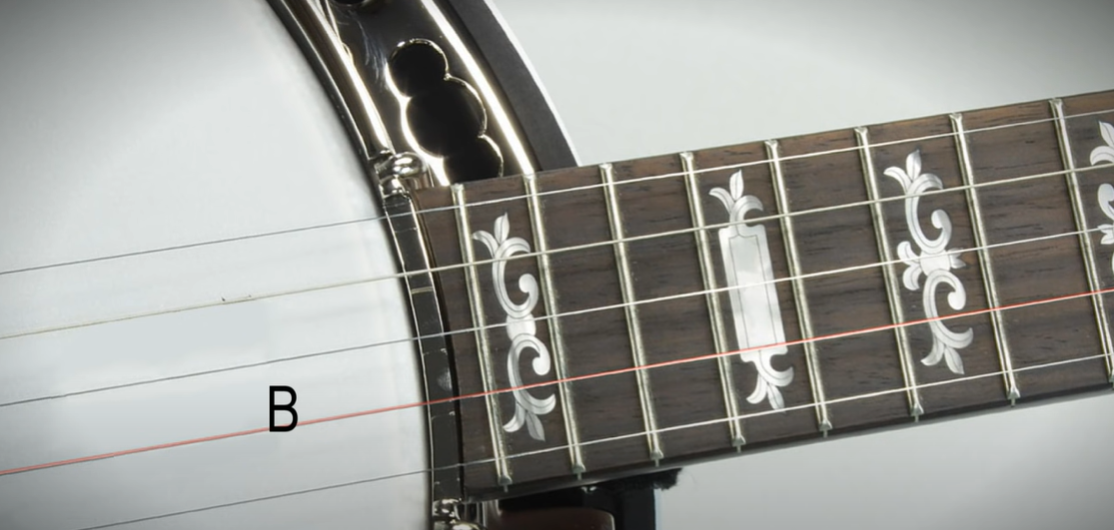
Electronic tuners
Electronic tuners are highly effective tools that greatly simplify the tuning process, making it accessible even to beginners. These clever devices utilize advanced technology to detect the vibrations from your banjo strings and compare their frequency to the standard frequency of musical notes. This meticulous analysis ensures an incredibly accurate detection of the pitch your string is tuned to. The tuner then provides visual feedback, typically through a needle or an LED display, indicating whether the string is perfectly in tune, slightly flat, or slightly sharp.
There is a wide variety of electronic tuners available, each with its own unique features and benefits. Clip-on tuners, for example, are immensely popular due to their portability and convenience. These compact tuners can be easily attached to the headstock of your banjo, picking up the vibrations through direct contact. Pedal tuners, on the other hand, are often favored by electric guitar players but can also be used for banjos equipped with pickups. Additionally, there are a plethora of tuner apps available for smartphones, providing a practical and cost-effective option for tuning your banjo on the go.
Regardless of the type of tuner you choose, it is crucial to ensure that it is set to the correct mode, such as the chromatic mode for banjos. This ensures that the tuner accurately detects the pitches and helps you achieve precise tuning. It is worth noting that while electronic tuners are invaluable tools, developing the ability to tune by ear will greatly enhance your musical understanding and flexibility in various musical situations.
So, whether you opt for a clip-on tuner, a pedal tuner, or a smartphone app, electronic tuners offer unparalleled accuracy and convenience, allowing you to achieve perfect tuning for your banjo effortlessly. Embrace this technological marvel while also nurturing your ear for music, and you’ll unlock a world of harmonious possibilities.[2]
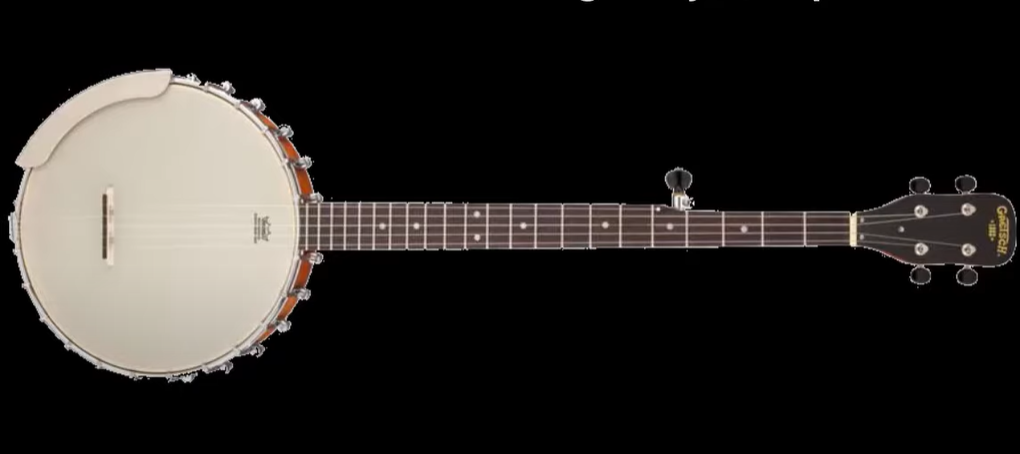
FAQ
What is the correct tuning for a banjo?
The standard tuning for a 5-string banjo is G-D-G-B-D, from the 5th string to the 1st. This open G tuning is the most common tuning used by banjo players. The 5th string, also known as the drone string, is usually tuned to the same note as the 1st string, but it’s shorter and sounds a higher pitch. The 4th string is tuned to D, the 3rd string is tuned to G, the 2nd string is tuned to B, and the 1st string is tuned to D. Depending on the type of music you’re playing, you might need to adjust this standard tuning.
For instance, in bluegrass music, the banjo often uses a G tuning, but the 2nd string is tuned up to C. This variation in tuning creates a unique sound that complements the fast-paced and energetic nature of bluegrass. On the other hand, in folk or country music, the banjo may be tuned to other pitches to suit the desired tone and style.
Regardless of the type of music, it’s critical to ensure that your banjo is correctly tuned to produce the right sounding chords and melodies. Each string should be in harmony with each other, creating a balanced and resonant sound. This can be achieved through careful adjustments of the tuning pegs and using a reliable tuner. As always, practice is key, and with time, tuning your banjo will become a quicker and more intuitive process. So, embrace the journey and enjoy the beautiful melodies that can be created with a well-tuned banjo!
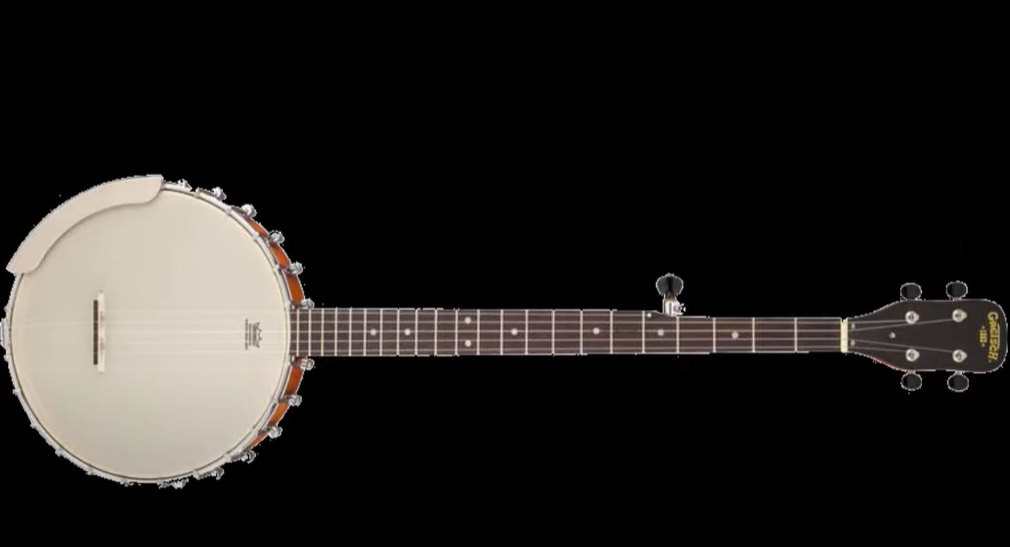
How do you tune a 5 string banjo?
Tuning a 5-string banjo involves several steps that require attention to detail. To begin, find a quiet place where you can clearly hear the tones produced by your banjo. This will help you accurately tune each string.
Let’s go through the tuning process step by step:
- 5th String (G): Start with the 5th string, which is typically the shortest string on your banjo and located closest to you. This string should be tuned to a high G, which is an octave higher than the 3rd string. Ensuring that this string is properly tuned sets the foundation for the rest of the strings.
- 4th String (D): Next, move on to the 4th string, which should be tuned to D. This note is also known as the root or tonic of the scale. To check the accuracy of this note, you can use an electronic tuner or a pitch pipe. Achieving the correct pitch for this string is crucial for maintaining the overall harmony of the banjo.
- 3rd String (G): The 3rd string should be tuned to a lower G, one octave below the 5th string. Once you have tuned this string, it’s a good practice to check its pitch against the 5th string to ensure that they are precisely one octave apart. This step contributes to creating a well-balanced and pleasing sound.
- 2nd String (B): Moving on, the 2nd string is tuned to B. This note forms a major third interval with the root D, establishing the basis for the major chord that characterizes the unique sound of the banjo. Paying attention to the accuracy of this string’s pitch adds depth and richness to your banjo playing.
- 1st String (D): Lastly, tune the 1st string to D, which is the same note as the 4th string. These two strings should resonate harmoniously when played together. Achieving this harmony not only enhances the sound quality but also allows for a smoother transition between different chords and melodies.
Throughout the tuning process, listen carefully for any dissonance or “beating” sounds that indicate discord between the strings. If you detect any inconsistencies, adjust the tuning pegs as needed until each pair of strings resonates harmoniously.
If you’re using an electronic tuner, make sure that it’s set to the chromatic mode to accurately detect pitches. With continued practice, you’ll develop the ability to tune your banjo quickly and accurately, ensuring that it is always ready to produce beautiful music.
Remember, a well-tuned banjo sets the foundation for creating captivating melodies and enjoying the full potential of this wonderful instrument.
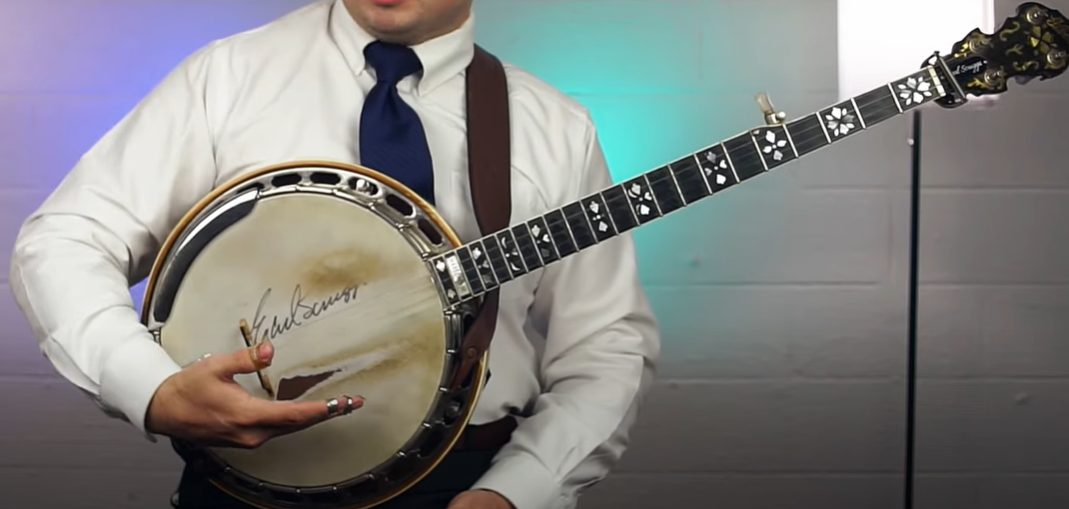
How do you tune down a banjo?
Tuning down a banjo, also known as ‘down-tuning’, is a technique frequently employed to achieve a deeper and more resonant sound or to match the vocal range of a singer. This process, similar to regular tuning, involves lowering the pitches of the strings, ultimately transforming the banjo’s tonality.
Here’s a step-by-step guide to down-tuning your banjo:
- 5th String (F# or F): Commencing with the 5th string, you can lower the pitch from G to either F# for a half-step down-tuning or F for a full-step down-tuning. By turning the tuning peg counter-clockwise, gently loosen the string and bring the pitch down. It is advisable to use a tuner to ensure the accuracy of the pitch.
- 4th String (C# or C): For the 4th string, follow a similar procedure by lowering the pitch from D to C# for a half-step down-tuning or C for a full-step down-tuning. Rotate the tuning peg counter-clockwise, making slight adjustments until the desired pitch is achieved. Again, employ a tuner to verify the accuracy of the pitch.
- 3rd String (F# or F): The 3rd string should be lowered from G to F# for a half-step down-tuning or F for a full-step down-tuning. Ensure that the pitch is an octave lower than the 5th string to maintain the desired tonal relationship.
- 2nd String (A or G#): Moving on to the 2nd string, reduce the pitch from B to A for a half-step down-tuning or G# for a full-step down-tuning. As with the previous strings, use a tuner to confirm the pitch accuracy, making necessary adjustments to achieve the desired sound.
- 1st String (C# or C): Lastly, focus on the 1st string, which should be tuned down from D to C# for a half-step down-tuning or C for a full-step down-tuning. Ensure that the pitch corresponds to that of the 4th string, creating a harmonious tonal foundation.
Remember, when loosening the strings, always exercise caution to avoid any potential damage. Additionally, it is important to adapt your playing technique to accommodate the looser strings and the altered feel on the fingerboard resulting from the down-tuning process. As always, practice is key to becoming comfortable with the new tuning and ultimately achieving the sound you desire.
How do you tune a banjo to itself?
Tuning a banjo to itself, often referred to as relative tuning, can be a useful method, especially when you do not have access to a tuner. It relies on the relationships between the strings rather than tuning each string to an external standard pitch. This technique allows you to maintain the relative pitch relationships between the strings, which is critical for playing chords and melodies correctly.
Here’s how you do it:
- 5th String (G): Start with the 5th string. If you’re unsure of the pitch, tune it as close to G as you can estimate. This string sets the foundation for the rest of the tuning process.
- 4th String (D): Next, fret the 4th string at the 5th fret. This should produce the same note as the open 5th string (G). Adjust the tension of the 4th string until these notes match, ensuring a harmonious transition between the two strings.
- 3rd String (G): Moving to the 3rd string, fret it at the 4th fret. You should hear the same note as the open 4th string (D). Adjust the tension of the 3rd string until these notes match, creating a seamless flow from the 4th to the 3rd string.
- 2nd String (B): Fret the 2nd string at the 3rd fret. It should now produce the same note as the open 3rd string (G). Make any necessary adjustments to the tension of the 2nd string, ensuring a smooth transition between the 3rd and 2nd string.
- 1st String (D): Finally, when you fret the 1st string at the 5th fret, it should sound the same as the open 2nd string (B). Fine-tune the tension of the 1st string until these notes match, creating a cohesive connection between the 2nd and 1st string.
Please note that while this method will ensure the strings are in tune with each other, it might not guarantee the banjo is in tune with other instruments or a standard pitch unless the 5th string was accurately tuned to G at the beginning. As always, practice and a good ear for pitch will make this process easier. Taking the time to master this tuning technique will enhance your banjo playing experience and allow you to explore various chords and melodies with confidence.
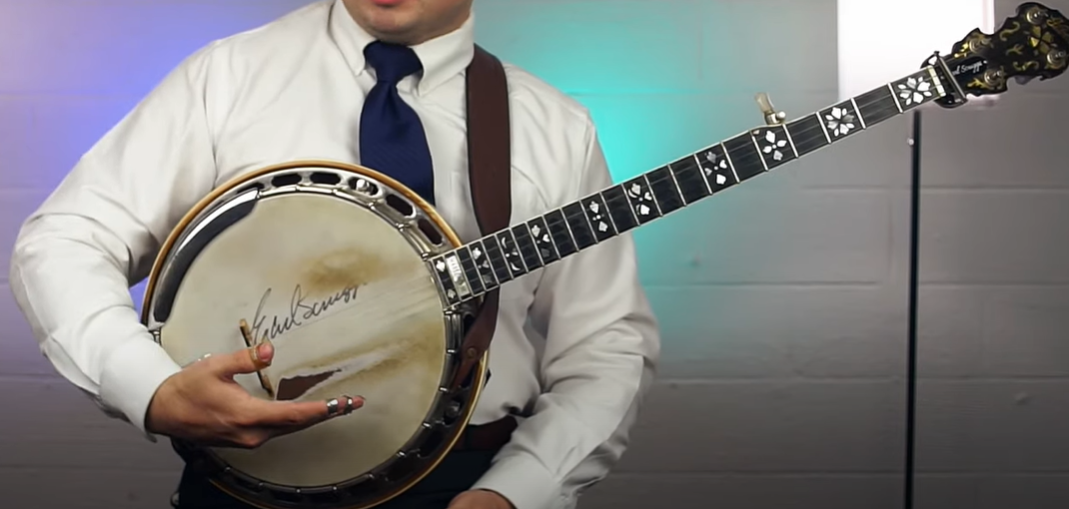
Why are banjos hard to tune?
Banjos can be quite challenging to tune for several reasons. Firstly, they possess a unique floating bridge that not only needs to be in the correct position for optimal sound but also requires careful adjustments to achieve the desired tonal quality. Even small shifts in the bridge position while tuning or playing can significantly impact the instrument’s intonation, making the tuning process more intricate.
Secondly, banjos have a drum-like head that is susceptible to changes in tension caused by temperature and humidity fluctuations. These variations in the banjo head’s tension can directly affect the tuning, adding an additional layer of complexity to the process.
Furthermore, banjos typically feature five strings, with the 5th string starting at the 5th fret. This design element gives the 5th string a higher pitch compared to the other strings, further complicating the tuning process. Achieving harmonious tuning across all strings while accounting for this pitch difference requires meticulous attention to detail and skill.
Lastly, the tightness of the banjo’s strings can shift over time due to the instrument’s use and exposure to different environments. As a result, frequent returning becomes necessary to maintain the banjo’s optimal sound quality and playability.
Considering these various factors, it becomes evident that tuning a banjo is a more intricate and involved process compared to many other stringed instruments, demanding patience, expertise, and a keen ear for achieving the desired musical outcome.
Can a banjo be tuned like a guitar?
Yes, a banjo can indeed be tuned like a guitar; however, this method is not conventional. The standard tuning for a 5-string banjo is G-D-G-B-D, starting from the 5th string. In contrast, standard guitar tuning is E-A-D-G-B-E.
If you wish to tune a banjo like a guitar, you may consider using the guitar’s D-G-B-E tuning for the 4-string banjo. For a 5-string banjo, you can tune the 5th string to G and the remaining strings as D-G-B-E, resembling the four highest pitches on a guitar. This tuning may be helpful for guitar players transitioning to banjo, as it allows them to apply familiar chord shapes.
However, it’s crucial to remember that this alters the banjo’s traditional sound and playing style. Traditional banjo tunings, such as the open G tuning, offer a unique and distinctive sound that is characteristic of the instrument. Exploring different tunings and techniques can expand your musical horizons and offer new creative possibilities.
Always ensure your tuning choice serves your music and stylistic preferences. Experimentation and personal exploration are key to finding the perfect sound for your banjo playing journey.
Useful Video: 5 String Banjo Tuner
Conclusion
Tuning a banjo properly is not only essential but also a fascinating aspect of mastering this unique instrument. The process of tuning involves more than just adjusting the strings to the desired pitch; it requires a deep understanding of the banjo’s distinct structure and the challenges that come with it.
When tuning a banjo, you may encounter different scenarios that demand specific approaches. For instance, down-tuning can be employed to achieve a deeper and more resonant sound, adding a touch of richness to your playing. Alternatively, tuning the banjo to itself can provide convenience and ease when playing in different keys or with other musicians. In some cases, you might even explore tuning your banjo like a guitar, allowing for a seamless transition between instruments and expanding your musical repertoire.
However, it’s important to note that tuning a banjo can be more complex compared to other stringed instruments due to its unique structure. Factors like the floating bridge and the tension of the banjo head add an extra layer of intricacy to the tuning process. But fear not, as with frequent practice, patience, and a keen ear for pitch, you can overcome these challenges and ensure that your banjo is always ready to deliver exceptional music.
Whether you’re a beginner embarking on your banjo journey or a seasoned player seeking to refine your skills, never underestimate the profound impact of well-tuned strings on your musical performance. The harmonious blend of precise tuning and your artistic expression will create a symphony that resonates with both your audience and your soul. So embrace the art of banjo tuning, and let your instrument sing with clarity, richness, and pure musical delight.
References:
- https://jofflowson.com/banjo-for-complete-beginners/how-to-tune-a-banjo/
- https://www.sweetwater.com/sweetcare/articles/banjo-tuning-guide-how-to-tune-a-banjo/




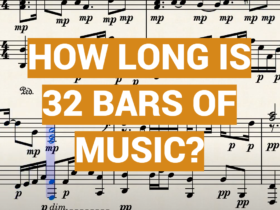
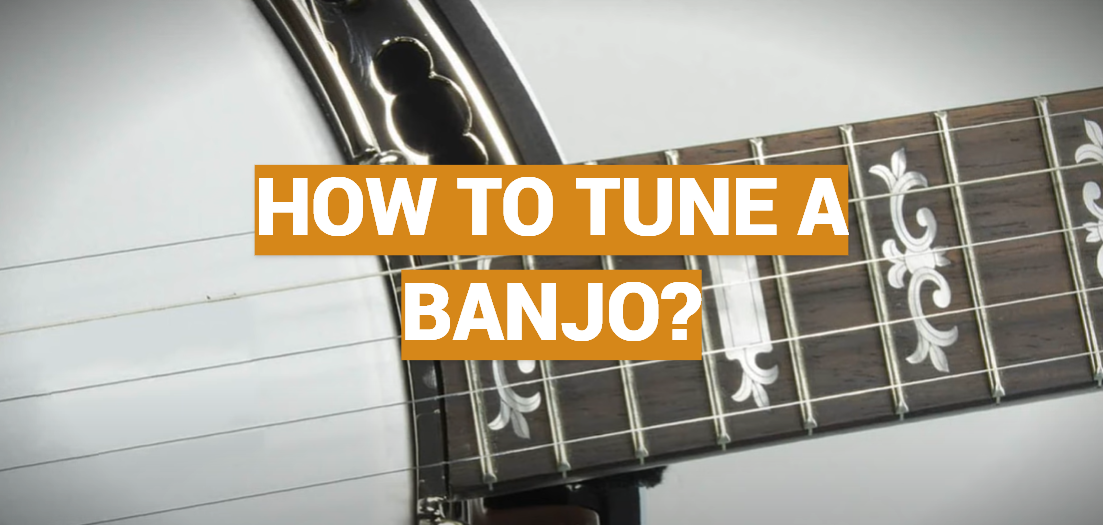




Leave a Reply